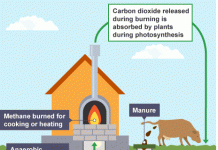
 As the saying goes, “If you’re good at something, never do it for free”. Turning your woodworking hobby into a business seems like a great way to get paid while doing something you love and are good at, right? There’s nothing quite like receiving appreciation and compensation for the labor of love you put into every piece of work you make. Not to mention, woodworking is a relatively low-cost business to get started in.
As the saying goes, “If you’re good at something, never do it for free”. Turning your woodworking hobby into a business seems like a great way to get paid while doing something you love and are good at, right? There’s nothing quite like receiving appreciation and compensation for the labor of love you put into every piece of work you make. Not to mention, woodworking is a relatively low-cost business to get started in.
While staring a woodworking business from your own home is a great idea, it is harder to execute and sustain in real life. You’ll have to face and conquer challenges like finding your target market and selling your products to them. Not to mention, the business is flooded with a lot of talent and competition as well.
Considering all these, you might feel overwhelmed and now a little doubtful about whether you have the means and skills to start a woodworking business at all.
Worry no more as Wood Profits: How Start & Run a Successful Home-based Woodworking Business (link to official website), an eBook written by Jim Morgan is here to serve as an all-around guide for you.
Unlike other eBooks of its kind, Wood Profits contains everything you need to know about starting a home-based woodworking business. It’s a guide that covers topics like picking a niche to marketing your products to making websites where you can showcase your work all explained in depth and from the experience of someone who has gone through these and ended with a successful business.
 The eBook is subdivided in chapters that discuss one step at a time. Here are some of the specific topics discussed so you’ll have an idea of what to expect when you purchase the eBook.
The eBook is subdivided in chapters that discuss one step at a time. Here are some of the specific topics discussed so you’ll have an idea of what to expect when you purchase the eBook.
Preparing a business plan.
As with any other industry, preparing a business plan that describes your business goals and future activities is crucial to your eventual success or failure. In Wood Profits, Jim Morgan shares how to prepare a strong business plan with all possible aspects and situations considered.
Setting up a workshop
The workshop is where you’ll be doing most, if not all, of your product work. To save on costs and for the sake of convenience, Morgan recommends that you setup your workshop in your garage. You can choose other parts of your home, but the eBook specifically details how to convert a garage into workshop for your woodworking business. In the book, you’ll find guides on how to pick a layout, setup some proper lighting and install some ventilation that’ll suit the garage space you already have.
Determining your niche
Since woodworking is such a broad category which can cover anything from making furniture to children’s toys, you’ll need to be clear about what kind of products you want to sell.
In Wood Profits, Morgan guides you through choosing and finding your business’s niche beginning by differentiating a niche and a target market. The book is also filled with tips on how to scout online sites like Etsy and eBay to research about existing competition.
How to target customers
Your target market is the most ideal set of people who are most likely to buy your products without much convincing. The books details some very useful online and offline methods that’ll help you find your target market. Some of the methods detailed by Morgan are conducting focused group discussions and doing an online survey of what currently sells on sites like Etsy.
Strategies on making it big in Etsy
The author also recognizes the importance of Etsy as a platform for selling custom products such as woodworks. With this in mind, you’ll find useful tips on how to dominate Etsy detailing topics such as how to open a shop on the site, how to price your goods and writing product descriptions that convert to sales.
Setting up online and offline sales channels
You can also sell your products in other ways. The book details how you can create your own website that’ll showcase and sell your work as well as how you can make the best of offline sales channels such as flea markets and craft events.
Dealing with clients and contractors
Morgan recognizes the importance of dealing with people as part of your business’ would-be success. Thus, Wood Profits has two separate chapters dedicated to tips on how to negotiate with clients through contracts and how to deal with contractors and suppliers.
Bonus: 10 most profitable woodcraft products (with plans)
Aside from the crucial topics mentioned above, you’ll also find a bonus chapter that lists the top 10 most profitable craft products you can easily create. Not only that, the chapter comes with highly-detailed instructions and even blueprints that will guide you through each step of the building process.
More details you’ll find on WOODPROFITS website








